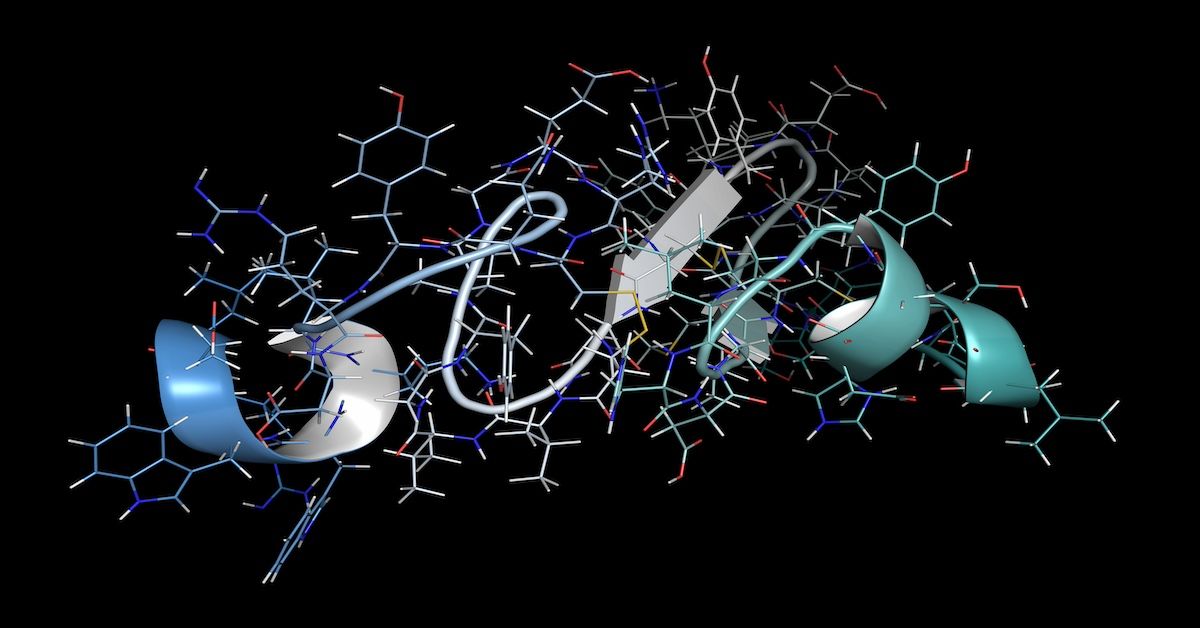News
Article
Second Analysis of FLAURA2 Trial Extends Benefit of Osimertinib Combo in NSCLC
Author(s):
Encouraging trends were seen with osimertinib and platinum-pemetrexed chemotherapy in patients with EGFR-mutated advanced non–small cell lung cancer (NSCLC) in the phase 3 FLAURA2 study.
A version of this article was originally published by Targeted Oncology™.
Findings of this analysis were consistent across sex, age, EGFR mutation, and central nervous system at baseline | Image Credit: molekuul.be-stock.adobe.com

Findings of a second interim analysis of overall safety (OS) showed encouraging trends for osimertinib (Tagrisso; AstraZeneca) and platinum-pemetrexed chemotherapy over osimertinib monotherapy in patients with EGFR-mutated advanced non–small cell lung cancer (NSCLC), according to results from the phase 3 FLAURA2 study (NCT04035486).
The median OS of the combination arm was not reached vs 36.7 months for the osimertinib-alone arm (HR, 0.75; 95% CI, 0.57-0.97; P = .02800).1 The combination also showed favorable postprogression outcomes for time to first subsequent treatment (TFST; HR, 0.73; 95% CI, 0.56-0.94), time to second progression after FST (HR, 0.70; 95% CI, 0.52-0.93), and time to second subsequent treatment (TSST; HR, 0.69; 95% CI, 0.65-1.24).
The investigators also noted that findings were consistent across OS subgroups, including sex, age, EGFR mutation, and central nervous involvement at baseline.
“What’s consistent across these subgroups are most of the HR points were below 0.8,” said lead author Natalia Valdiviezo Lama, MD, medical oncologist at the National Institute of Neoplastic Diseases and an associate physician of the Medical Oncology and Research Service at Oncosalud in Peru, during presentation of the data at the European Lung Cancer Congress 2024 in Prague, Czech Republic.1
FLAURA2 was a global, open-label trial that randomly assigned 557 patients with EGFR-mutant advanced NSCLC to first-line osimertinib plus platinum-pemetrexed or osimertinib alone. Patients assigned to osimertinib plus chemotherapy had an 8.8-month improvement in median progression-free survival (PFS) per investigator analysis compared with osimertinib alone.
Median PFS was 25.5 months for the combination compared with 16.7 months for monotherapy. At 24 months, the PFS rate was 57% for osimertinib plus chemotherapy vs 41% for osimertinib alone. Median TFST for the combination arm was 30.7 months (95% CI, 27.3-not calculable [NC]) compared with 25.4 months for the monotherapy arm (95% CI, 22.8-NC), for a 27% reduced risk of death (HR, 0.73; 95% CI, 0.56-0.94). Median TSST for the combination arm was not reached (NR; 95% CI, NR-NR) compared with 33.2 months for the monotherapy arm (95% CI, 28.2-NC).
When reviewing second-line therapies, investigators reported that chemotherapy was the most common first subsequent treatment.
Median TFST for the combination arm was 30.6 months (95% CI, 29.0-NC) compared with 27.8 months for the monotherapy arm (95% CI, 26.0-NC), for a 30% reduced risk of death (HR, 0.70; 95% CI, 0.52-0.93).
“The osimertinib plus chemotherapy [regimen] reduced the risk of second progression or death by 30% compared with osimertinib monotherapy,” Valdiviezo Lama said.
The analysis showed that the median OS was not reached for the combination arm (95% CI, 38.0-NC) compared with 36.7 months for the osimertinib-alone arm (95% CI, 33.2-NC) (HR, 0.75; 95% CI, 0.57-0.97; P = .0280) and an overall maturity of 41%. After Kaplan-Meier analysis, although the monotherapy regimen showed good efficacy, the curve separation favored the combination treatment for about 60 months, Valdiviezo Lama said.
Valdiviezo Lama also noted that postprogression outcomes for OS analysis shifted from the first to second interim analyses. During the first interim OS analysis, the HR was 0.90 (95% CI, 0.65-1.24) compared with 0.75 (95% CI, 0.57-0.97) in the second interim OS analysis.
“There is a shift in favor to the osimertinib plus chemotherapy regimen,” Valdiviezo Lama said.
At the time of first analysis, half of the patients were still receiving study treatment, and 55% of patients who received osimertinib plus platinum-pemetrexed chemotherapy were still on treatment. Postprogression outcome results favored first-line osimertinib plus platinum-pemetrexed chemotherapy vs osimertinib monotherapy for patients with EGFR-mutated advanced NSCLC. At the second interim OS analysis, investigators noted a favorable trend toward benefit (HR, 0.75; 95% CI, 0.57-0.97; P = .0280) for the combination regimen vs the monotherapy.
“First-line osimertinib plus platinum-pemetrexed chemotherapy provides long-term clinically meaningful benefits, beyond that seen for initial PFS, for patients with [EGFR-mutated] advanced NSCLC,” Valdiviezo Lama concluded.
The primary completion date for FLAURA2 was April 3, 2023, and the estimated completion date of the phase 3 trial is June 3, 2026.2
References
1. Valdiviezo Lama NI, Okamoto I, Hughes BGM, et al. First-line (1L) osimertinib (osi) ± platinum-pemetrexed in EGFR-mutated (EGFRm) advanced NSCLC: FLAURA2 post-progression outcomes. Ann Oncol. 2024;9(suppl 3):153. doi:10.1016/esmoop/esmoop102569
2. study of osimertinib with or without chemotherapy as 1st line treatment in patients with mutated epidermal growth factor receptor non-small cell lung cancer (FLAURA2) (FLAURA2). ClinicalTrials.gov. Updated February 14, 2024. Accessed June 18, 2024. https://clinicaltrials.gov/study/NCT04035486





